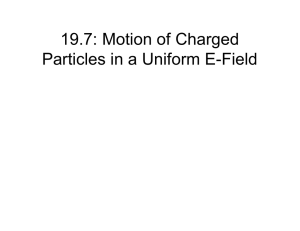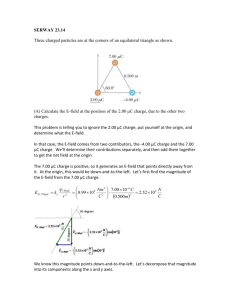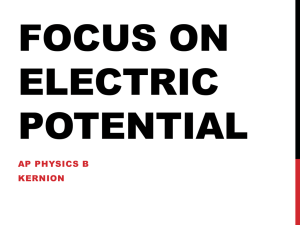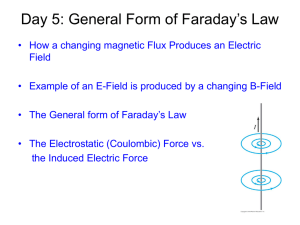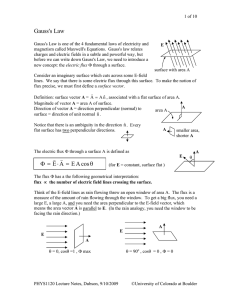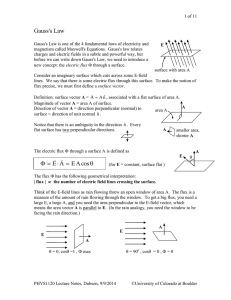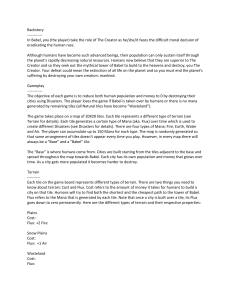24.3
advertisement
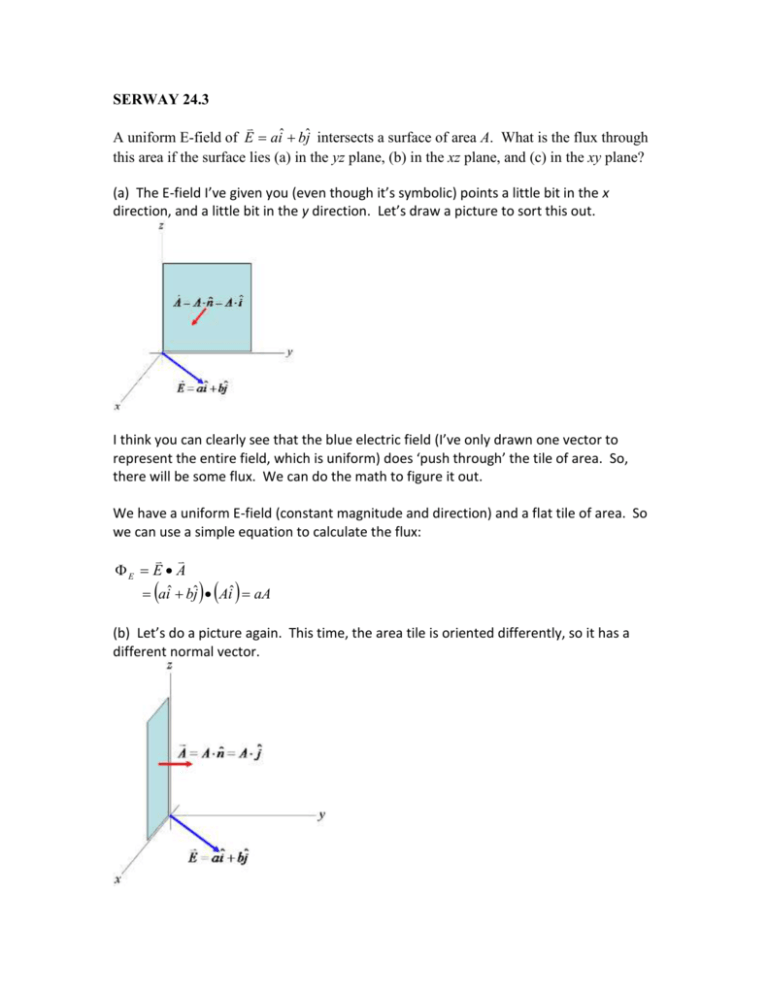
SERWAY 24.3 A uniform E-field of E aiˆ bˆj intersects a surface of area A. What is the flux through this area if the surface lies (a) in the yz plane, (b) in the xz plane, and (c) in the xy plane? (a) The E-field I’ve given you (even though it’s symbolic) points a little bit in the x direction, and a little bit in the y direction. Let’s draw a picture to sort this out. I think you can clearly see that the blue electric field (I’ve only drawn one vector to represent the entire field, which is uniform) does ‘push through’ the tile of area. So, there will be some flux. We can do the math to figure it out. We have a uniform E-field (constant magnitude and direction) and a flat tile of area. So we can use a simple equation to calculate the flux: E E A aiˆ bˆj Aiˆ aA (b) Let’s do a picture again. This time, the area tile is oriented differently, so it has a different normal vector. In math, the flux is: E E A aiˆ bˆj Aˆj bA (c) Last one. Now E-field doesn’t ‘push through’ the area at all, so the flux should be zero. In math, the flux is: E E A aiˆ bˆj Akˆ 0

